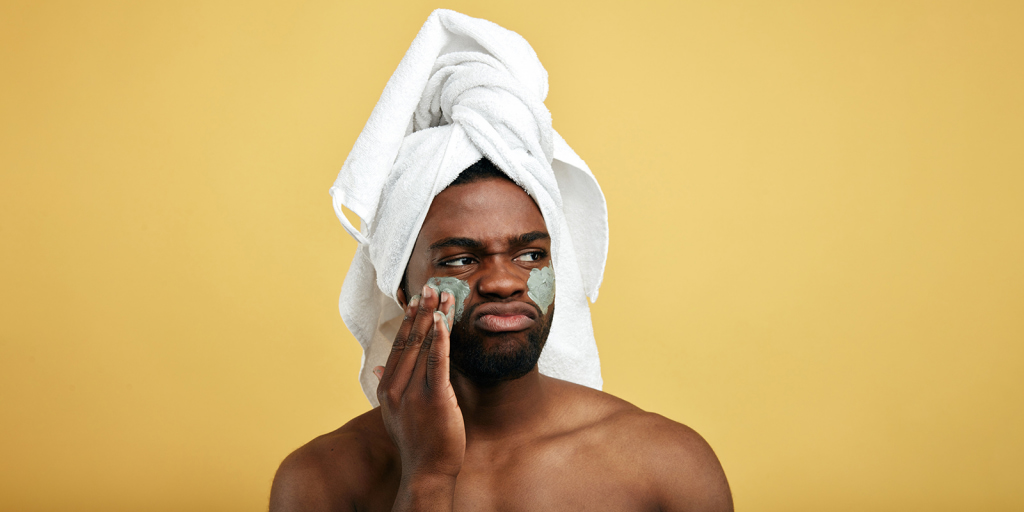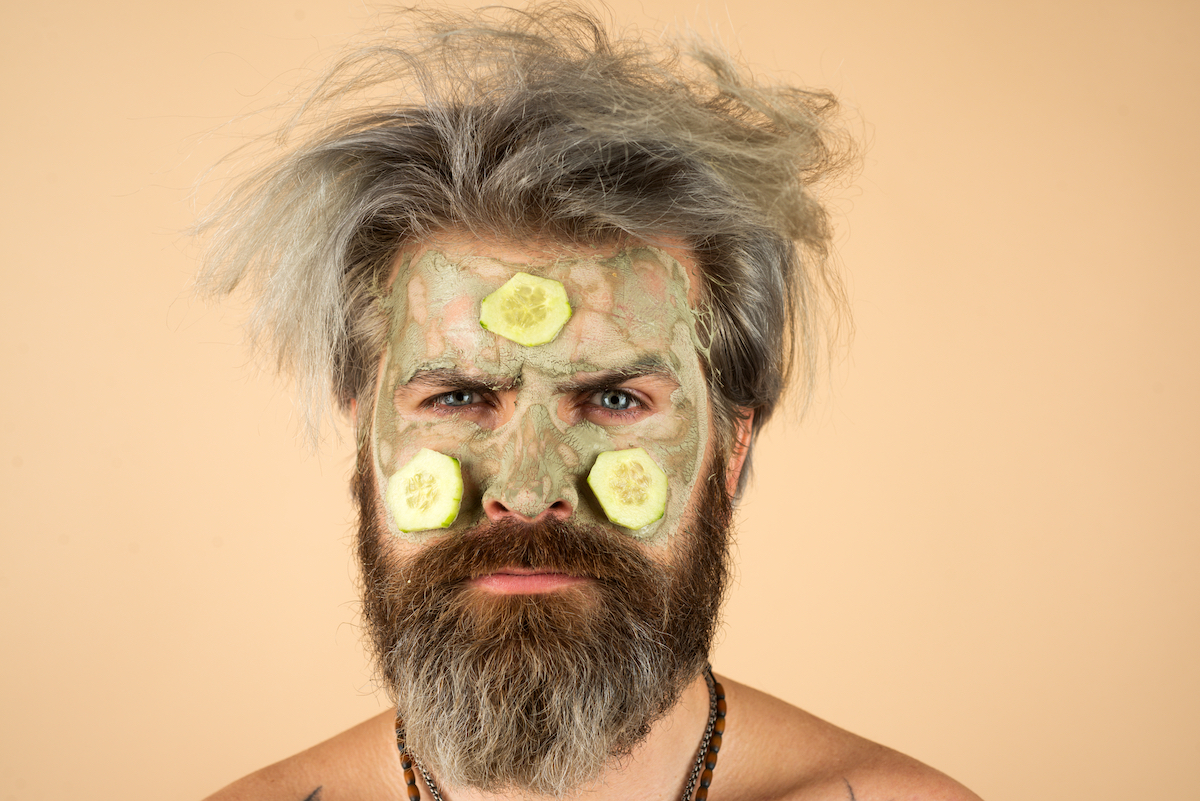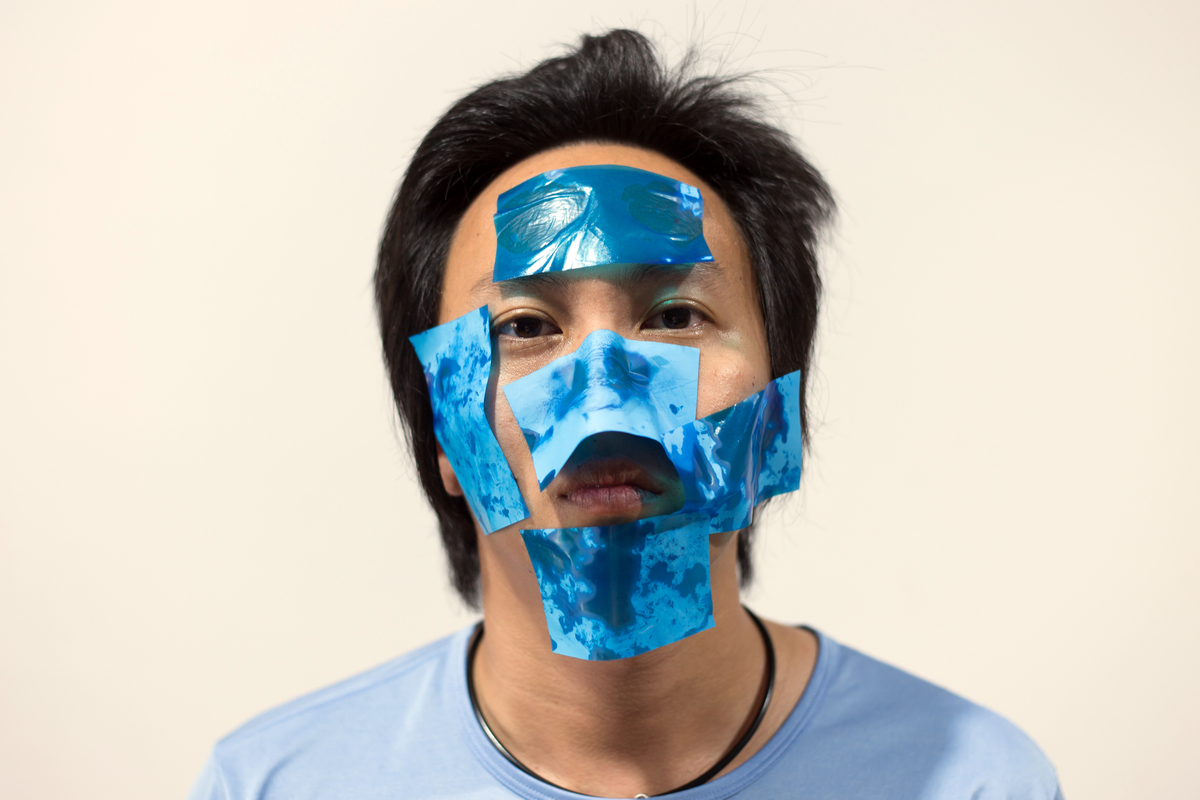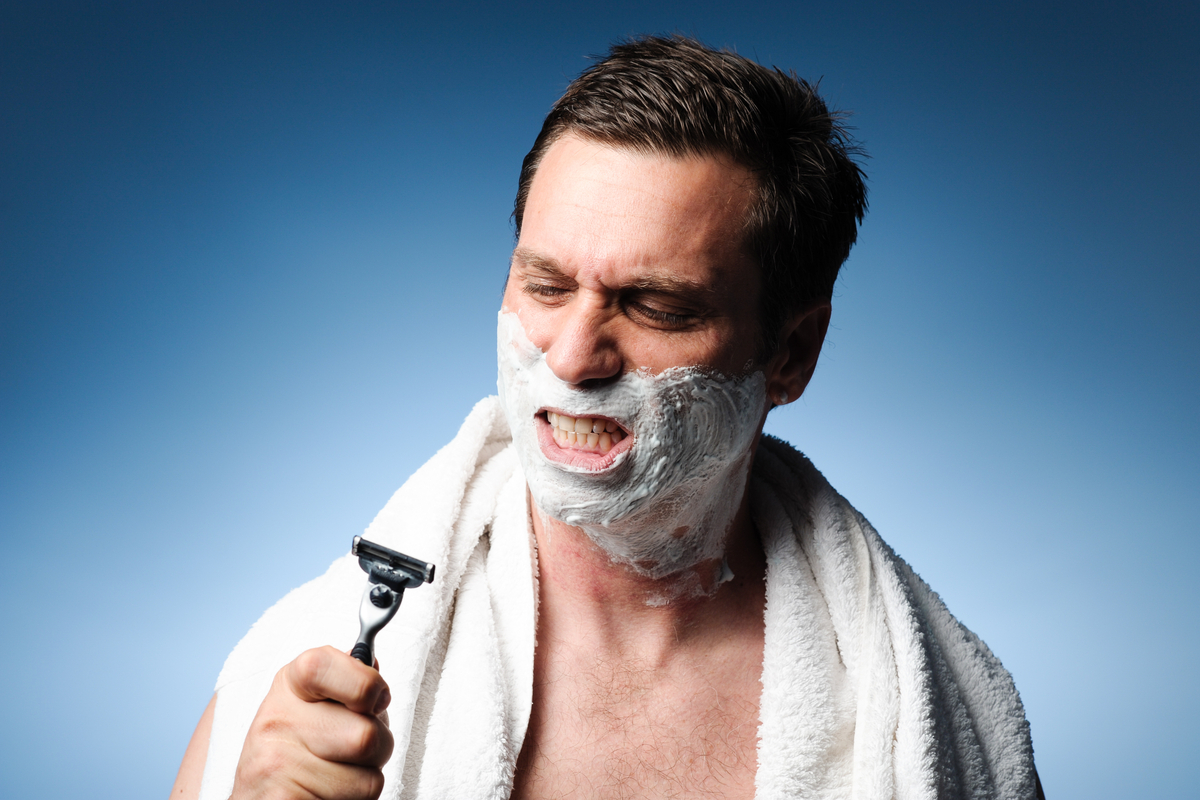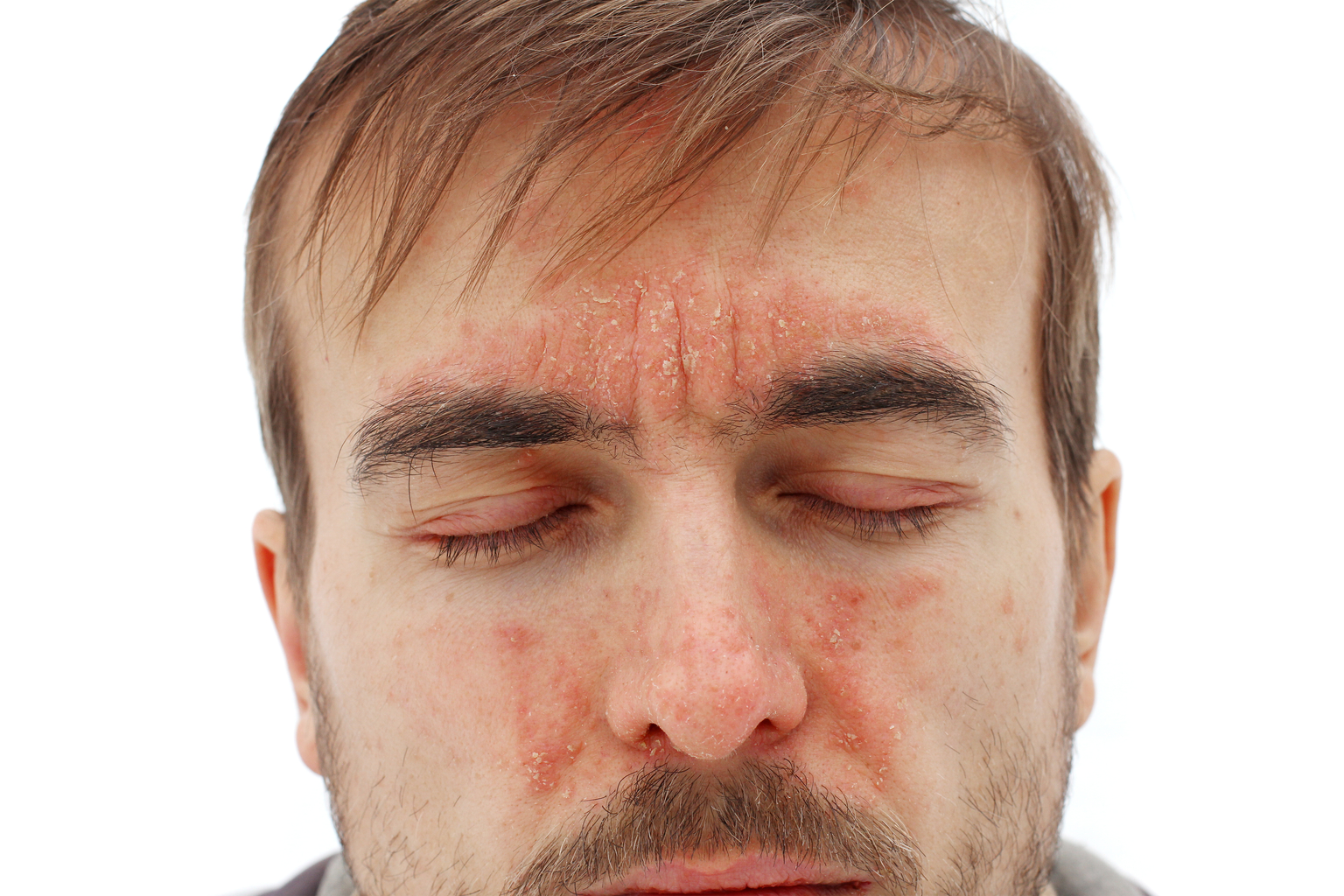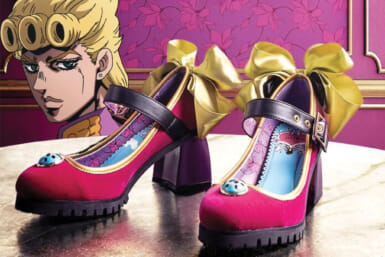Men have thicker skin with more collagen, which — provided that they hydrate regularly — theoretically means that men should look younger than women of the same age. However, this is not always the case. Many (certainly not all) men don’t take the extra time to work on their skin so many end up with all sorts of skin conditions, including acne, irritation and redness, or even dull, tired skin by the time they’re in the late 30s.
If you’re one of those people who think that shaving and then throwing on some aftershave is enough when taking care of your skin, think again. A solid skincare routine is an essential part of a good grooming regimen that will lead to less frequent breakouts, fewer irritations, and ward off visible signs of aging. With a few simple steps that take only a few minutes, you will begin to notice the difference sooner than you think. And guaranteed, you will feel great!
Problem 1: Dry Skin
Some people are more prone to dry skin than others, but many men experience dry skin on their face due to the changes in weather and humidity, using products that have too many irritating ingredients, not drinking enough water throughout the day, or stress or lack of sleep. Whatever the culprit, the good news is that dry skin can be treated — it just takes a few adjustments in your daily routine.
Symptoms: Flaky and rough in texture skin, itchiness, cracks in the skin, skin pain, superficial wrinkles with a rough texture and/or prone to skin infections.
What to do: Wash your face twice a day and use a cleanser only once in the evening during your bedtime routine. Look for a product that is formulated for sensitive skin and that will keep your skin hydrated. Stay away from face products with ingredients such as benzoyl peroxide, AHA, and/or salicylic acid — these ingredients are for acne-prone skin types and often can dry out the skin if used too frequently or for prolonged periods.
Serums, moisturizers and ointments can improve the skin’s natural barrier function, which helps retain hydration and moisture in the skin. Using a serum during the daytime is best, while a cream moisturizer provides extra benefits during your bedtime routine. When searching for the right serum, look for products that are not only formulated for men, but also contain extra hydrating ingredients such as aloe vera, vitamin E, peptides, and/or hyaluronic acid. For cream moisturizers, make sure the product is oil and fragrance-free and has as few ingredients as possible.
Recommended Products: Wakan Organics Men’s Serum (¥4180), Shiseido Mens Active Concentrated Serum (¥7,150), La Roche-Posay Toleriane Softening Foaming Gel (¥3850)
Problem 2: Oily Skin
Located in the middle layer of the skin are sebaceous glands that have the primary function of protecting the skin with natural lubrication. This lubrication is called sebum and men’s skin tends to produce more of that than women’s skin, resulting in an oiler appearance. According to dermatologists, this can be simply explained by hormonal differences. Men have a hormone called DHT (dihydrotestosterone) and higher levels of this hormone seems to contribute to higher levels of sebum production. The plus side, oilier skin is more hydrated or lubricated and thus tends to age better – less wrinkles, is firmer, and tends to have a brighter complexion.
Symptoms: Oily skin appears to have larger pores, appearance is shiny with an oil-like film on the surface of the skin, thicker feeling in complexion and/or more prone to acne and breakouts.
What to do: Use a cleanser that is specific for oily skin twice a day, once in the morning and then before you go to bed. Be careful not to over-wash your face, as this can excessively dry out the skin causing breakouts and excess oil production. If you excessively dry out your face, it goes into oil production overdrive to get the skin back to its natural state.
Using a face scrub once or twice a week can make a huge difference in your overall skin’s texture, brightness, and help with oil control. When used right, a face scrub will help remove any excess dead skin cells and other buildups (and excess oils) accumulated over the day or week. Try adding this to your nighttime routine, but be careful not to over-scrub or use too much product. Find something that is natural or has a fine grain/exfoliant.
Face wipes and blotting papers are a great product to have stashed in your bag, too. These pre-moistened wipes effectively remove sweat, oil and excess dirt, which can clog pores. Luckily in Japan, you can find these just about anywhere – every convini and drugstore will have them. Blotting papers or aburatorigami are small, but highly absorbent sheets that quickly soak up excess oil from your skin (but without drying it out). Simply dab the sheet all over your problem areas until the paper becomes translucent.
Recommended products: Gatsby Facial Paper Towel and Uno face cleansing sheets, Calendula Deep Cleansing Foaming Face Wash (¥3,740), Brickell Men’s Products Face Scrub (¥3,000)
Problem 3: Acne
Adult acne is one of the most common skin conditions that affect men beyond their teenage years. This is often the result of stress and lifestyle changes, poor diet, and skin biology. As we know now, men’s skin produces more oil and as well as larger pores and thus increases the risk of unwanted breakouts.
Symptoms: Any (or a combination) of whiteheads, blackheads, pimples, and/or in severe cases, nodules or cysts. Skin can be painful, red with inflammation, and/or appear greasy in appearance.
What to do: From OTC (over the counter) treatments to at-home and natural remedies and even dermatologist-prescribed products, there are many ways to combat acne breakouts. While spot treatments may help, using the right cleanser can often help prevent pimples from popping up in the first place. Look for products that contain salicylic acid, tea tree oil, or calendula. These ingredients will help deep-clean pores and remove dead skin cells from the surface. Laser facial treatments are also effective for treating light-to-moderate acne. The light used in laser therapy works to kill bacteria and lower sebum levels that may cause acne, reduce inflammation, and also help the skin’s overall texture and appearance. For severe cases or persistent acne, please visit a dermatologist for further advice.
Recommended products: Nikibi Care Cleanser (¥2080), Fancl Acne Care Lotion (¥1,650), La Roche-Posay EFFACLAR H (¥3,300)
Problem 4: Shaving Dermatitis (Razor burn and irritation)
Shaving dermatitis, also known as razor burn, is essentially ingrown hairs or inflammation at the hair follicle resulting from shaving. Affecting at least 60% of men, it is one of the most common skin problems men have. It is often caused by hairs that become trapped underneath the skin rather than growing straight out, forming small razor bumps. While men who have coarse or curly hair are more prone to these bumps and ingrown hairs, more or less, anyone who shaves will at some point experience this issue. Irritating aftershave products can also cause it.
Symptoms: Small pimple-like bumps, redness, irritations and swelling, burning sensation, sensitive skin, and/or itchiness.
What to do: Treating shaving dermatitis is often as simple as waiting it out and not making a huge fuss over your skin. Since the skin is already irritated, doing too much will further aggravate the situation. What can help calm down affected areas is applying a cool face towel for a few minutes or trying products that are concentrated in aloe vera. The best way to prevent razor burn in the future is to follow a few adjustments to your skin routine.
Before you start shaving, it’s important that you warm up your face with warm water to moisten your skin and soften the hairs. By doing this, you will help the razor glide more smoothly across your face with less chance of dragging and tugging the skin. Using the right products is critical, as well. If you use shaving cream or gel, make sure you buy a product that will properly lubricate the skin, so you don’t run into razor burn. Also, using a face scrub once to twice a week (during your nighttime routine) can significantly reduce your outbreaks, leaving your skin feeling fresh, clean, and bright.
Finish your shave with something cool and refreshing. Just like you prepared your skin and facial hair before shaving, it’s equally important to close everything back up after you’re done. All you need to do is rinse your face with some cold water after you’re done shaving. This will remove extra debris (and tiny hairs) but, most importantly, close your pores. If you prefer using an aftershave lotion, that’s ok too. A gentle pat of some aftershave lotion (tonic) will help to disinfect and cleanse your pores, especially if you are prone to redness and breakouts.
Recommended products: Three For Men Gentling Lotion (¥5,000), Menon Shave – After Shave Lotion (¥1,480)
Problem 5: Rosacea (chronic redness)
Rosacea is a chronic long-term skin condition that mainly affects the areas around the nose and upper cheeks of the face. While the cause of the skin disorder is unclear, several triggers are associated with typical rosacea flareups. These can include excessive drinking, spicy foods, caffeine, hot beverages and intense exercising.
Symptoms: Persistent redness around the cheeks and nose, swollen pimple-like red bumps, irritation and sometimes warm sensation when associated with triggers, rough skin, small veins appearing around the affected areas.
What to do: Rosacea is a difficult skin condition to treat, but there are ways you can manage and control the intensity of redness. Firstly, if you can figure out what triggers cause flareups, avoid them. When your rosacea is causing itchiness or, in severe cases, pain, visit a dermatologist for further care and treatment. To help maintain your rosacea, try to use sensitive skincare products, make sure you wear a high SPF sunscreen when outdoors, avoid extreme heat and humidity and make an effort to lower and manage stress.
Recommended products: Nivea Men’s UV 50+ Protector (¥2,480), Dr. Ci Labo’s Red Face Toner (¥5,280), Three For Men Gentling Foam (¥3,800)

